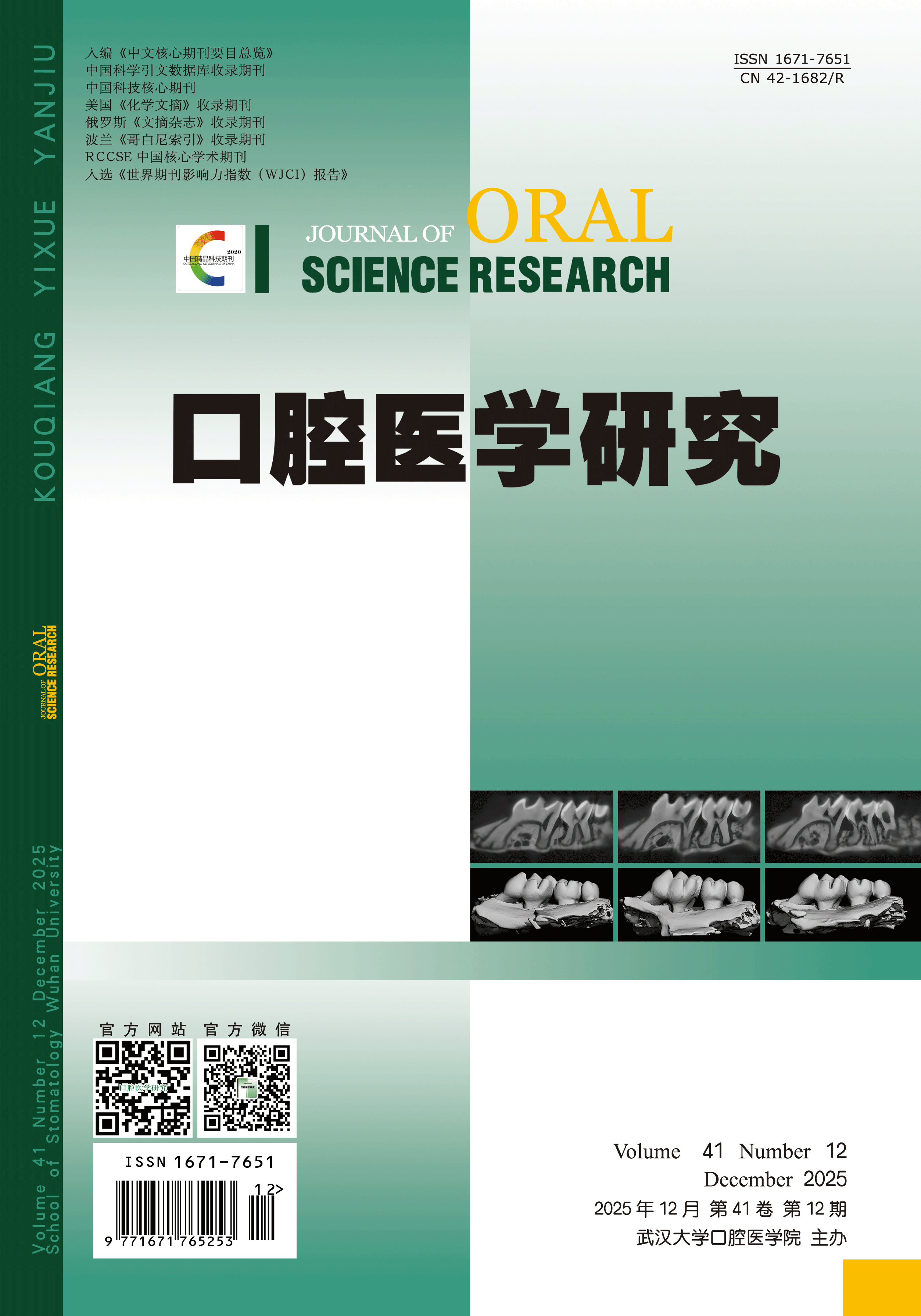|
|
Impact of Icariin on Periodontal Tissue Inflammatory Damage in Periodontitis Rats by Regulating NOX2/ROS/NF-κB Pathway
XIAO Zunsheng, DING Wencui, LIU Lu, WEN Chao
2025, 41(12):
1050-1054.
DOI: 10.13701/j.cnki.kqyxyj.2025.12.006
Objective: To discuss the impact of icariin (ICA) on periodontal tissue inflammatory damage in periodontitis rats by regulating NADPH oxidase 2 (NOX2)/reactive oxygen species (ROS)/nuclear factor kappa B (NF-κB) pathway. Methods: Rats were grouped into control group, model group, ICA low-dose group (ICA-L, 20 mg/kg), ICA high-dose group (ICA-H, 40 mg/kg), and NOX2 inhibitor group (2.5 mg/kg), each with 12 rats. Gingival bleeding index (BI) was used to assess periodontal tissue inflammation. Micro CT was used to measure alveolar bone resorption. HE staining was used to measure the pathological morphology of periodontal tissue. Tartrate resistant acid phosphatase (TRAP) staining was used to detect osteoclast count. ELISA method was used to test interleukin-1β (IL-1β), interferon-γ (IFN-γ), superoxide dismutase (SOD), ROS, and catalase (CAT). Western blot was used to detect the NOX2 and NF-κB proteins. Results: Compared with the control group, the model group showed prominent increases in BI, CEJ-ABC distance, IL-1β, IFN-γ, ROS levels, NOX2, and NF-κB proteins (P<0.05), significant decreases in SOD and CAT (P<0.05), ulceration and erosion of gingival epithelium, extensive infiltration of inflammatory cells in the gingival solid layer, a prominent downward movement of the alveolar ridge, and a large number of active osteoclasts. Compared with the model group, the ICA-L group, ICA-H group, and NOX2 inhibitor group showed prominent increases in GI, CEJ-ABC distance, IL-1β, IFN-γ, ROS levels, NOX2, and NF-κB proteins (P<0.05), significant decreases in SOD and CAT (P<0.05), obvious reduction in gingival epithelium damage and inflammatory cell infiltration, upward movement of alveolar ridge crest, and decrease in osteoclasts. GSK2795039 treatment could reverse the effects of ICA on the above indicators. Conclusion: ICA may improve the periodontal tissue inflammatory damage in periodontitis rats by inhibiting NOX2/ROS/NF-κB pathway.
References |
Related Articles |
Metrics
|

